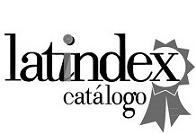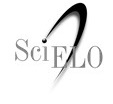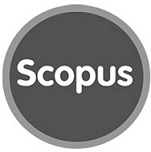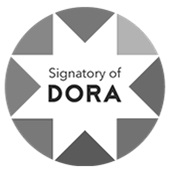Submissões
Condições para submissão
Como parte do processo de submissão, os autores são obrigados a verificar a conformidade da submissão em relação a todos os itens listados a seguir. As submissões que não estiverem de acordo com as normas serão devolvidas aos autores.- El envío no ha sido publicado previamente ni se ha sometido a consideración por ninguna otra revista (o se ha proporcionado una explicación al respecto en los Comentarios al editor/a).
-
Se proporcionarán Nombre y Apellido, email, filiación y ORCID del autor o los autores
COAUTORÍA: el autor de correspondencia se compromete a notificar del envío y mantener informados a los coautores en todo el proceso editorial.
Diretrizes para Autores
Bonplandia é uma publicação do Instituto de Botânica do Nordeste (UNNE-CONICET) fundada no ano 1960. Sua divulgação é semestral (fevereiro-julho e agosto-janeiro), publicando-se na primeira quinzena de fevereiro e agosto. Bonplandia se destaca por ser uma revista aberta a artigos originais sobre taxonomia, anatomia, morfologia, fisiologia, genética, citogenética, biotecnologia aplicada e genômica funcional, etnobotânica, palinologia, florística, ecologia e outras áreas da biologia vegetal, referidos a todos os grupos de plantas e organismos relacionados (cianobactérias, algas, fungos e líquens), tanto atuais como fósseis. Os artigos de nossa revista estão focalizados nas disciplinas antes mencionadas, abrangendo o continente americano.
O processo de edição implica diferentes etapas, a saber: avaliação preliminar do manuscrito (originalidade, tema, qualidade e apresentação) por parte dos editores associados e do diretor; arbitragem online e de revisão cego simples com avaliação do conteúdo confiada a juízes externos. Quando o diretor recebe o informe, comunica ao autor o ditame mas não informa o nome dos árbitros; o formato do texto segundo o estilo da revista é conduzido pelo editor assistente; a revisão das provas de impressão são responsabilidade do autor e dos editores. É preciso destacar que, embora os árbitros definem sobre os trabalhos de seus colegas, a decisão final pertence ao diretor da revista.
Declaração de adesão ao acesso aberto
• Todos os conteúdos da revista estão disponíveis em forma aberta, gratuita e online antes da publicação impressa.
Instruções gerais
• Admitem-se trabalhos redigidos em espanhol, inglês ou português.
• A extensão dos manuscritos não deve superar de 30 páginas. Se for excedida esta quantidade, será necessário comunicar ao Comitê Editorial antes de enviar o manuscrito.
• Os manuscritos devem ser apresentados em página A4, fonte Times New Roman tamanho 12, duplo espaço e margens de 3 cm. Todas as páginas têm que estar numeradas. Deve se utilizar uma versão de processador de texto compatível com Word.
Estilo
• Todo o texto, incluindo os títulos, deve estar alinhado para a esquerda, sem espaços, tabulações, nem justificado. Inserir um espaço entre as palavras e, no final de cada parágrafo, só uma marca.
• É preciso respeitar os sinais diacríticos próprios de cada idioma (tremas, acentos, etc.) também nas maiúsculas.
• Recomenda-se não começar os parágrafos com abreviaturas nem gerúndios.
• Todas as figuras e tabelas devem estar citadas no texto. Por exemplo: (Fig. 1A), (Tabela 1).
• Escrever os números com algarismos arábicos, exceto no começo de oração ou para numerar mais de uma Observação.
• Utilizar aspas para nomes vulgares e palavras ou frases em idioma estrangeiro.
• Usar itálica somente nas expressões latinas (sensu lato, in vitro, loc. cit., etc.) e para nomes científicos de gêneros e categorias subgenéricas. Escrever os nomes de famílias e classificações superiores com letra normal.
• Não se deve abreviar os nomes de autores citados no texto.
• Empregar numeração seguida para as notas de rodapé. Colocar o algarismo arábico como expoente.
• Os trabalhos não taxonômicos devem inscrever em Material e Métodos os espécimes testemunhas ordenados alfabeticamente por classificações taxonômicas e dados completos dos mesmos (lugar e data de recolecção, colecionadores, herbário no qual estão depositados).
• O manuscrito deve constar das seguintes partes: 1) título e autores (respeitando maiúsculas e minúsculas); 2) resumo e sumário; 3) texto; 4) bibliografia; 5) tabelas; 6) ilustrações.
• A seguir, um resumo das principais pautas de estilo de cada uma destas partes. Diante qualquer dúvida, sugere-se seguir o estilo do último volume de Bonplandia.
Título do trabalho e Autores
• O título deve expressar claramente e em forma sucinta o conteúdo do trabalho. Escrever com maiúscula/minúscula (primeira letra maiúscula e as outras minúsculas), sem sublinhar nem ponto final; em português (ou idioma original) e em inglês.
• Ao introduzir o nome de um táxon específico ou genérico, acrescentar entre parênteses a classificação taxonômica superior, sem siglas.
• No caso dos nomes dos autores, escrever o primeiro nome completo e após o sobrenome, sob o título, tudo com maiúscula/minúscula (primeira letra maiúscula e as outras minúsculas). Se houver mais de um autor, devem ser escritos na mesma linha. Consignar correio eletrônico para contato (autor de correspondência).
Todos os autores deverão incluir o identificador digital ORCID no envio inicial do manuscrito para ser considerado (https://orcid.org (https://orcid.org/)).
• Determinar os dados de lugar de trabalho, endereço, correio eletrônico, cargo em alguma instituição, etc., em notas de rodapé.
• Pôr um título abreviado “running title” no encabeçamento nas páginas ímpares.
Resumo e Sumário
• Admitem-se um máximo de 200 palavras em cada resumo e sumário, tendo que ser escritos em um único parágrafo.
• Colocar em outro parágrafo as palavras-chave e “key words”. Separar as palavras por vírgulas e ordem alfabética (máximo de seis). De preferência, empregar palavras não usadas no título. Escrever os nomes próprios e as determinações taxonômicas com maiúscula/minúscula (primeira letra maiúscula e as outras minúsculas).
Texto Geral
• Recomenda-se organizar o texto nos seguintes títulos: Introdução, Materiais e Métodos, Resultados, Discussão, Conclusões, Agradecimentos, Bibliografia. Nos trabalhos taxonômicos que tratem numerosas espécies, sugere-se adicionar Índice de nomes científicos e Índice de colecionadores.
• Dentro de cada título podem se usar até dois níveis de subtítulos. O subtítulo de primeiro nível deve ir na esquerda em letra cursiva, sem ponto final e o parágrafo tem que começar em nova linha. O subtítulo de segundo nível deve estar alinhado na esquerda em letra cursiva e terminar em ponto na linha.
• Nos trabalhos taxonômicos, os títulos com informação adicional (Distribuição geográfica, Nomes vulgares, Fenologia, etc.) têm que ir seguidos pelo sinal de pontuação dois pontos (:).
• As unidades de medida ou pontos cardinais requerem ser abreviados segundo o sistema internacional, por exemplo: m, cm, g, ml, pm, etc.; N, S, L, O, NE, NO, etc. No caso das coordenadas usar W para Oeste. Indicar a altitude com "m" no texto e na cita de materiais pode ser somente "m" ou "m.s.n.m.". Não se deve acrescentar as abreviaturas "s.m." nem "elev.". Escrever todos os acrônimos com maiúsculas e sem pontos (FAA, ADN, etc.).
• Indicações sobre expressões numéricas: n= 10, 2n, 30º C, 100%.
Texto em Estudos Taxonômicos
• Numerar os gêneros e espécies consecutivamente dentro de cada família ou gênero, com algarismos arábicos. Identificar os táxones intraespecíficos dentro de cada espécie com letras minúsculas.
• As claves têm que ser dicotómicas.
• O nome científico deve levar na linha seguinte a referência da(s) figura(s): Fig. 1
• No caso de táxones já descritos, inserir os dados do tipo depois da cita bibliográfica correspondente a cada nome. Quando o material tipo corresponda a uma espécie antiga, sugere-se transcrever entre aspas a cita completa que figura na diagnose original. Assinalar o material examinado com um ponto de exclamação posterior ao acrônimo do herbário correspondente.
• Ao se tratar de espécies novas, o nome do táxon deve ir seguido da sigla e da abreviatura sp. nov. Aconselha-se ilustrar estes táxones.
• É necessário iniciar o texto com a diagnose. Por recomendação do Código de Nomenclatura, a indicação do tipo de nomenclatura deve ir imediatamente após à diagnose e deve se usar a palavra latina typus ou holotypus. Os isótipos precisam ser consignados seguidamente do holótipo. Continuar o texto com a caracterização em português.
• Consignar o material adicional com o título de Paratypus, depois de ter sido descrito em português.
• Na descrição do táxon as medidas de comprimento e largura de um caráter podem se indicar da seguinte maneira:
8-13 × 4-5 mm
8-13 mm long., 4-5 mm lat.
• Após disto, indicar o resto do material sob o subtítulo Material estudado.
• A informação sobre nomes vulgares («entre aspas»), número cromossômico, fenologia, distribuição geográfica e ecologia, deve ser incluída antes do Material estudado. Distribuição geográfica e Material estudado sempre têm que estar um seguido do outro.
• Finalmente devem ir as Notas e Observações (Obs.), numeradas com algarismos arábicos somente no caso de ser mais de uma.
• No índice de nomes científicos, escrever os nomes válidos em negrita.
• No índice de colecionadores os números de cada coletor devem ser ordenados de maneira ascendente. Utilizar a pontuação como no exemplo:
Krapovickas, A., 180 (6), 348 (5), 992 (5)
Krapovickas, A. & C. L. Cristóbal, 14199 (11), 14362 (11), 23271 (6)
• Para a abreviatura dos nomes dos autores de táxones, buscar em: http://www.tropicos.org
• Os nomes das publicações periódicas devem ser citadas em forma completa, sem abreviaturas.
• A letra inicial das siglas dos autores dos táxones deve ser escrita com maiúscula. Só indicar a primeira vez que sejam nomeadas as categorias taxonômicas no texto.
• Em cita de material de herbário, o país deve ir sempre com maiúscula e negrita. A divisão política que segue ao país (Estado, Província, Departamento, etc.) escrever com Maiúscula/minúscula e negrita. Seu nome não deve ir precedido da abreviatura correspondente (Est., Prov., Dep.). As divisões políticas menores podem ir precedidas pelas abreviaturas correspondentes (Mun., Dep., Pdo., Prov.). No caso de que se repita parte da menção, convém utilizar a palavra idem.
• Na citação de material típico, devem ser transcritos textualmente todos os dados da etiqueta, mesmo dos colecionadores com seus iniciais.
• Os exemplares precisam ser citados em ordem alfabética por país, província, etc., respeitando a pontuação especificada:
Material estudado: ARGENTINA. Corrientes: Dep. San Miguel, Ea. Santa Julia, chacra Tres Cambá, 28º 06´17´´S, 57º28´24´´W, 67 m, 11-XI-2012, Medina & Aparicio 268 (CTES). MÉXICO. Guerrero: Mun. La Unión, 8 km al N de la Unión, por la terracería a Coahuayutla de Guerrero, 13-XI-1983, fl, fr, Koch et al. 83121 (BM, CTES, TEX). Jalisco: Coastal plain near the highway to Autlán, 5 miles north of Bahia Navidad, 9-XI-1960, fl fr, McVaugh 20882 (CTES, MICH).
Bibliografia
• As citas bibliográficas ou referências da bibliografia no texto devem ser feitas segundo a norma internacional APA 7ma. edição que pode ser consultada no seguinte link: https://normasapa.com/como-referenciar-articulos-cientificos/(https://normasapa.com/como-referenciar-articulos-cientificos/).
• Exemplos: (Rossow, 1993), (Rossow, 1993: 82), ...segundo Rossow (1993); (Arriaga et Sánchez, 1981) ou (Grosso et al.,1994) no caso de 3 ou mais autores.
• Na bibliografia devem ser citadas as obras mencionadas no texto. Estabelecer uma ordem alfabética e cronológica dos autores, quando forem referidos vários trabalhos da mesma pessoa.
• Quando um autor possuir vários trabalhos no mesmo ano, tais terão de ser diferenciados com letras minúsculas colocadas depois do ano (a, b, c, etc.).
• Em trabalhos de taxonomia, a bibliografia anexada aos nomes latinos das espécies ou gêneros não precisa ser repetida na Bibliografia, a menos que seja mencionada no texto.
• Quando se trata de um livro, consignar editorial e lugar de publicação.
• Se o trabalho tiver o identificador de objeto digital (DOI), acrescentar no final da cita.
• A continuação uma amostra do formato que deve se seguir:
Botta, S. M., Múlgura De Romero, M. E. & Martínez, S. (1995). Proposal to conserve the name Junellia Moldenke. Taxon 44: 639-640. https://doi.org/10.2307/1223514
Harley, R. M. (2008). Lamiaceae. En Zuloaga, F. O., O. Morrone & M. J. Belgrano (eds.), Catálogo de las Plantas Vasculares del Cono Sur (Argentina, Sur de Brasil, Chile, Paraguay y Uruguay). Monographs in Systematic Botany from the Missouri Botanical Garden 107: 2362-2392.
Ferrucci, M. S., Cáceres Moral, S. A. & Galvany Casals, M. (2002). Las plantas trepadoras. En Arbo, M. M. & S. G. Tressens (eds.), Flora del Iberá, pp. 111-153. EUDENE, Corrientes.
Bartoli, A. & Tortosa, R. D. (1998). Estudios taxonómicos en Grindelia (Asteraceae). XXVI Jornadas Argentinas de Botánica, Río Cuarto, Córdoba, 22 al 27 de noviembre de 1998, p. 230.
Solís, S. M. (2011). Estudios morfo-anatómicos y ontogenéticos en flores de Paullinieae y su significado evolutivo. Tesis Doctoral, Universidad Nacional de Córdoba, Argentina. 184 pp.
The Plant List. (2013). A working list of all plant species. Disponible: http://www.theplantlist.org/ (Consulta 03/03/18).
Thiers, B. Index Herbariorum: a global directory of public herbaria and associated staff. New York Botanical Garden´s Virtual Herbarium, http://sweetgum.nybg.org/ih
Whittaker, R. H. (1972). Evolution and measurement of species diversity. Taxon 21: 213-251. https://doi.org/10.2307/1218190.
Nota
- O DOI deverá ser incluído sempre que estiver disponível, em nova linha sob a referência bibliográfica. Pode ser obtido registrando-se em Crossref e carregando sua lista bibliográfica no serviço disponível (registre-se para a comparação de citas, verifique em seu endereço de e-mail e aceite os termos, permite-lhe procurar até 5000 referências a cada mês): https://apps.crossref.org/SimpleTextQuery (https://apps.crossref.org/SimpleTextQuery/).
Tabelas
• Favor de respeitar o tamanho da caixa da revista, que é de 15 cm × 21,5 cm, ou a largura de uma coluna (7,2 cm).
• Apresentar cada tabela em um arquivo Excel.
• Numerar as tabelas com algarismos arábicos.
• Escrever a legenda no encabeçamento da página da tabela; em português (ou no idioma original) e inglês.
• Utilizar letras minúsculas para as notas de rodapé.
Ilustrações
• Todas as ilustrações precisam ser de boa qualidade e realizadas em branco e preto ou bem, em escala de cinzas, segundo corresponda. As despesas das ilustrações em cores para o formato impresso devem ser pagas pelo autor; enquanto que no formato digital não têm custo.
• Os desenhos, fotografias, mapas, gráficos, etc. são considerados figuras. Portanto, é preciso numerá-los consecutivamente no texto.
• Todas as ilustrações devem ser remitidas digitalmente com formato TIFF de resolução mínima de 600 DPI. Digitalizar os desenhos em tinta em branco e preto (não em escala de cinzas), enquanto que os mapas e fotografias devem se expedir em escalas de cinzas. Não inserir as imagens no arquivo de texto. Nomear cada arquivo com o número da figura (Exemplo: figura1.tiff, figura2.tiff, etc.).
• Respeitar em cada desenho as proporções da caixa da revista. Se for possível, acrescentar a legenda dentro desta superfície.
• Caso a figura conste de várias fotos ou desenhos, devem se utilizar letras maiúsculas para assinalá-los. Preferentemente, pôr na direita e embaixo de cada desenho ou foto, mantendo uma ordem horizontal de esquerda para direita e vertical de cima para baixo. Levar em conta que o tamanho das letras, uma vez reduzidas às medidas da caixa, não deve ser menor a 3 mm.
• Os mapas devem ser enquadrados em uma caixa. Além de incluir como mínimo duas marcas de latitude e longitude e uma escala em quilômetros.
Legendas das figuras
• Escrever em folha separada anexada ao texto em português (ou no idioma original) e inglês, como no seguinte exemplo:
Fig. 1. Galianthe longisepala. A: Planta. B: Bainha da estípula com lacínias. C-E: Flor longistila. C: Flor. D: Hipanto, cálice, estilo e estigma. E: Interior da corola desdobrada. F-H: Flor brevistila. F: Alabastro. G: Flor. H: Hipanto, cálice, estilo e estigma. I: Interior da corola desdobrada. J: Fruto. K-L: Semente. K: Cara dorsal. L: Cara ventral (AD, JL, Irwin 13307; Irwin 25504).
Fig. 1. Galianthe longisepala. A: Plant. B: Stipulated sheath with lacinia. C-E: Longistyle flower. C: Flower. D: Hypanthus, calyx, style and stigma. E: Interior of the unfolded corolla. F-H: Brevistyle flower. F: Alabaster. G: Flower. H: Hypanthus, calyx, style and stigma. I: Interior of the unfolded corolla. J: Fruit. K-L: Seed. K: Dorsal face. L: Ventral face. (A-D, J-L, Irwin 13307; F-I, Irwin 25504).
• As siglas dos autores dos táxones não fazem parte das legendas.
Resumo Visual
Depois de ter sido aceito o trabalho o/s autor/es deve/m enviar um resumo visual para utilizar na divulgação do artigo nas redes sociais. Uma figura especialmente desenhada para isso, que compreenda o conteúdo do artigo para os leitores. Podem-se utilizar imagens do texto ou outras de sua autoria. Este resumo não tem legenda e deve conter o mínimo texto possível. O formato deve se ajustar às seguintes características: 800 x 800 pixels, alta resolução (300 DPI), formato JPG, cor RGB, letras em formato Arial, 14 (nomes científicos de gênero ou de categorias inferiores se escrevem em cursiva). O resumo visual será divulgado no sítio web da revista Bonplandia e nas redes sociais: Facebook, Instagram e Twitter.
Envio do manuscrito
O envio do manuscrito com seus arquivos anexados pode se realizar de duas maneiras:
Via e-mail:
Diretora da Revista, Dra. Myriam Carolina Peichoto, mcpeichoto@gmail.com
Via online: https://revistas.unne.edu.ar/index.php/bon/about/submissions#onlineSubmissions
Declaração de Direito Autoral
Declaration of Adhesion to Open Access
- All contents of Bonplandia journal are available online, open to all and for free, before they are printed.
Copyright Notice
- Bonplandia magazine allows authors to retain their copyright without restrictions.
- The journal is under a Creative Commons Attribution 4.0 International license.
Política de Privacidade
Los nombres y las direcciones de correo electrónico introducidos en esta revista se usarán exclusivamente para los fines establecidos en ella y no se proporcionarán a terceros o para su uso con otros fines.










.jpg)


